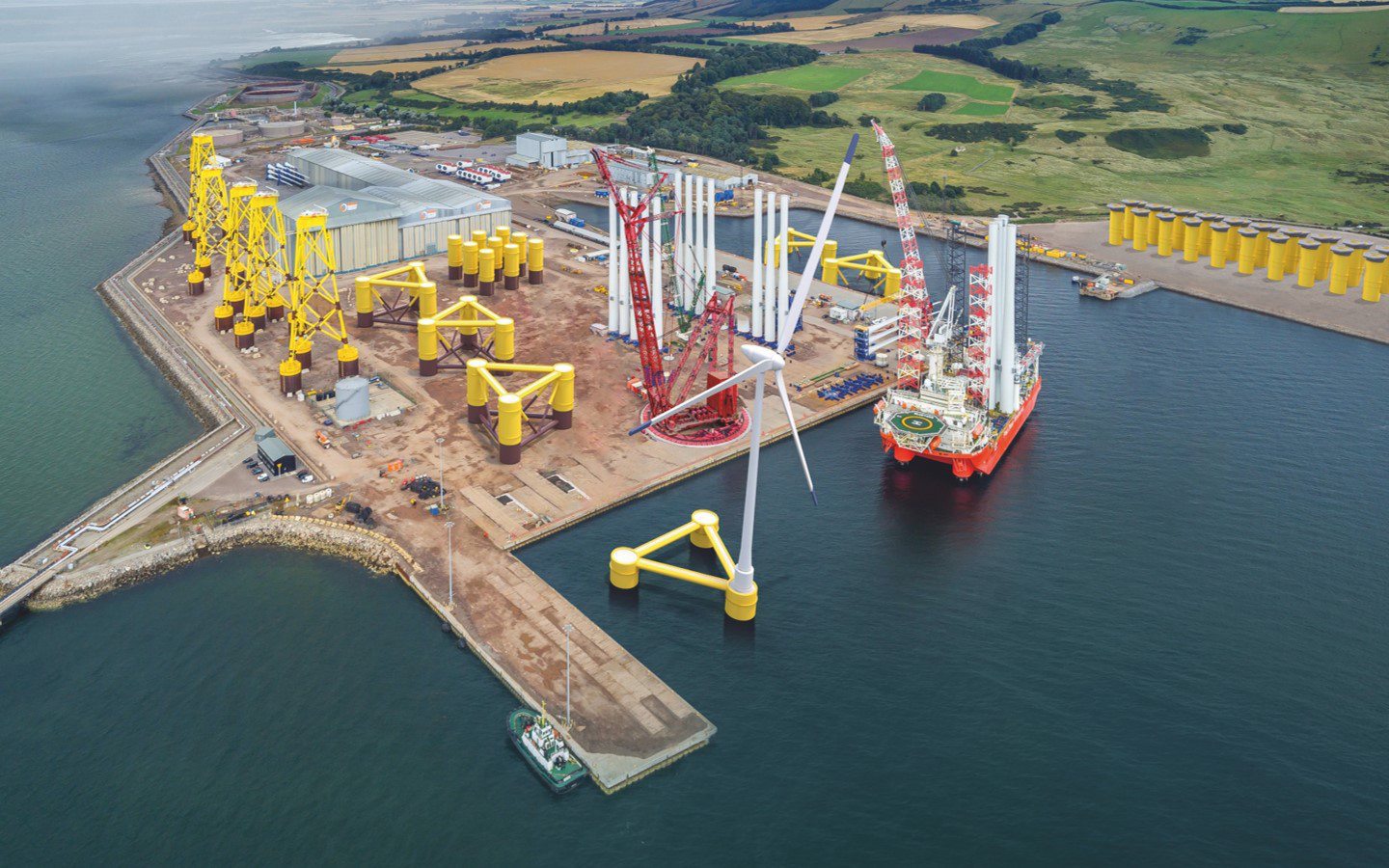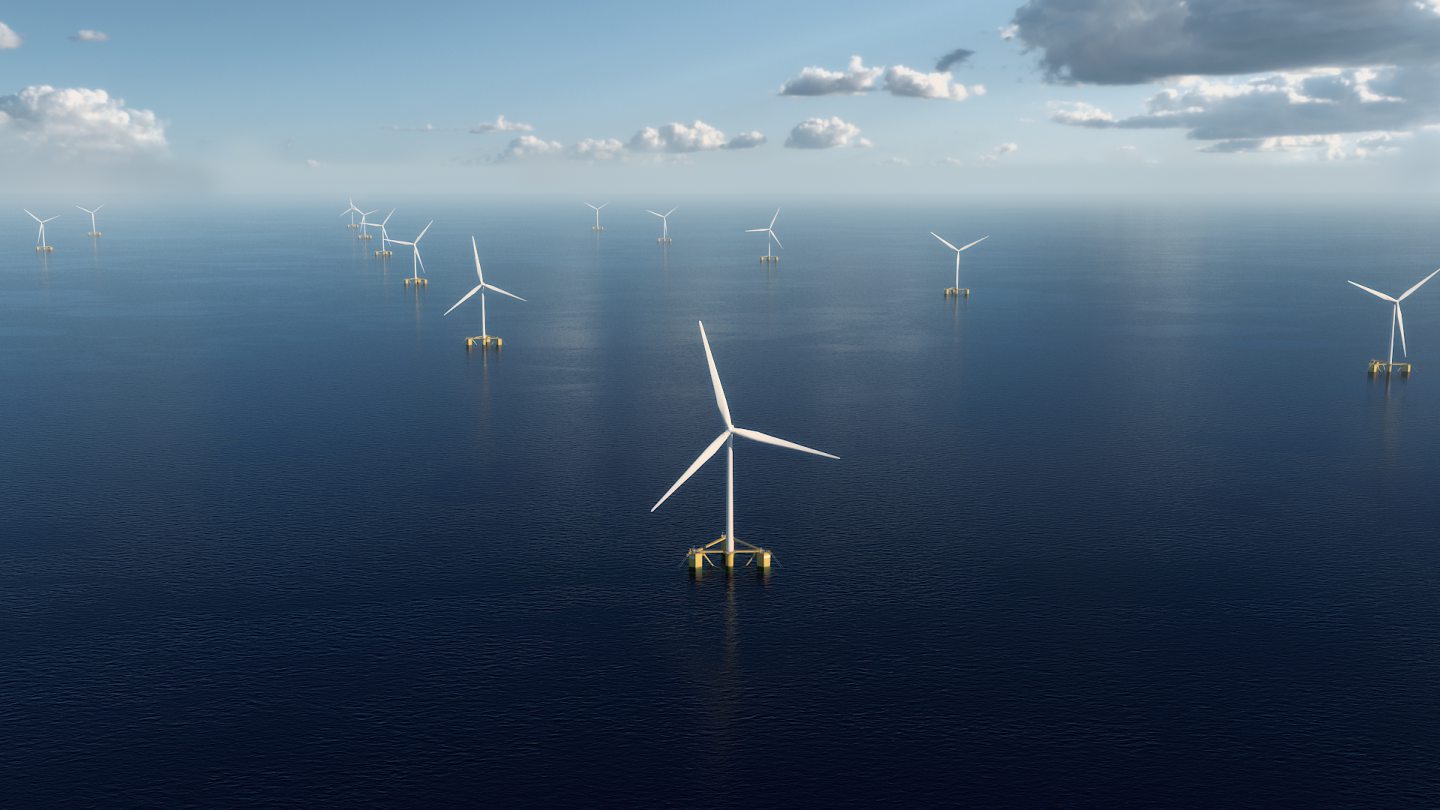The UK is currently on track to miss its 2030 floating offshore wind deployment target by 90%, according to analysis by Westwood Global Energy Group.
In 2022, the UK government set a target to generate 50GW in offshore wind by 2030, including 5GW of floating offshore wind.
The UK is a world leader in floating wind, with around 80 MW in installed capacity and a 35GW pipeline of projects including 29GW in Scotland.
However, Westwood expects the UK to install just 500MW in floating wind capacity by the start of 2030, primarily made up of demonstration projects.
Westwood’s floating wind analysis follows a separate recent report which found just 4% of industry leaders think the UK will meet its wider 50GW target.
According to its analysis, Westwood said the UK could reach its target of 5GW of installed floating wind “sometime in 2034”.
This coincides with when Westwood expects the first gigawatt scale ScotWind projects will be fully commissioned.
Westwood said the timely delivery of ScotWind projects will be “crucial” to the UK achieving gigawatt scale operational floating wind.
Inflation, financing, grid access and ports
Westwood analysts David Linden and Peter Lloyd Williams told Energy Voice that several factors are impeding floating wind deployment, many involving third parties that face their own difficulties in delivering on schedule.
These include challenges around port infrastructure, grid access and supply chain capability.
“Similar to the wider offshore wind industry, cost inflation, and financing costs in particular, have impacted the commercial viability and decision timelines of projects,” they said.
“However, Westwood does expect the delivery of floating wind capacity in the UK to ramp-up from the early 2030s as these issues are addressed.”
Floating wind sector seeks more support
A recent Westwood survey of floating wind leaders found the sector is seeking more support across the value chain to speed up project delivery.
“A focus for the government should be to ensure that the processes under its direct control run as smoothly and predictably as possible, particularly with regard to the planning process for offshore wind and associated infrastructure,” the Westwood analysts said.
Westwood said the government should optimise periodic processes such as annual CfD allocation rounds to ensure projects do not face “avoidable delays”.
For example, Westwood pointed to the lack of ringfenced funding for floating wind projects in the upcoming sixth allocation round (AR6).
Additionally, Westwood said there are concerns about the size of the AR6 budget and other assumptions used in the government’s calculations.
“This does not signal a strong intent to support the sector,” Westwood said.
“The government will need to decide how much direct intervention and investment is necessary to drive floating wind forward at a faster pace, versus creating ‘sufficient’ support and clarity in demand to attract private investment.”
2030 floating wind target ‘worth pursuing’
The Westwood analysis follows a separate report which found the UK is likely to overshoot its 50GW offshore wind target by 18 years, putting thousands of jobs and net zero goals at risk.
Offshore Renewable Energy (ORE) Catapult principle portfolio manager for floating offshore wind Andrew Stormonth-Darling said deployment targets “rightly set challenging goals”.
“But they are worth pursuing and achievable with the right timely supporting activity,” he said.
Mr Stormonth-Darling said floating wind offers huge economic potential for the UK by opening up deeper waters and greater wind resources, alongside overlap North Sea with oil and gas operations.
“As with any new technology, there are challenges to overcome, such as securing the right scale and timing of investment in grid and port infrastructure, as well as moving towards greater standardisation in terms of the substructure design, without stifling valuable innovation,” he said.
“ORE Catapult is heavily engaged in efforts to find the right pathways through these challenges and to fast track the development of technology that can allow floating offshore wind to scale up.”
He point to the newly opened Floating Wind Innovation Centre in Aberdeen and other ORE Catapult research initiatives as examples of efforts to test and derisk new technologies and address deployment challenges.
Elsewhere, the UK government is also progressing the £160m FLOWMIS scheme focused on improving port infrastructure for floating wind projects.
Meanwhile, the Scottish government established a ‘‘Strategic Investment Model’ process to support ScotWind and INTOG supply chain projects.
Heading into a general election, the leading Labour party has also promised to invest in floating wind through its proposals for GB Energy.
But with mounting challenges and time running out, it will be a difficult task to get the UK’s 5GW 2030 floating wind target back on track.
Recommended for you




 © Supplied by Flotation Energy
© Supplied by Flotation Energy © Supplied by Ross Creative Commun
© Supplied by Ross Creative Commun © Supplied by Cerulean Winds
© Supplied by Cerulean Winds




![[REBRODCAST] Illuminating the Path to Wealth and Economic Opportunities](https://lbnntv.com/wp-content/uploads/2023/12/REBRODCAST-Illuminating-the-Path-to-Wealth-and-Economic-Opportunities-120x86.jpg)

